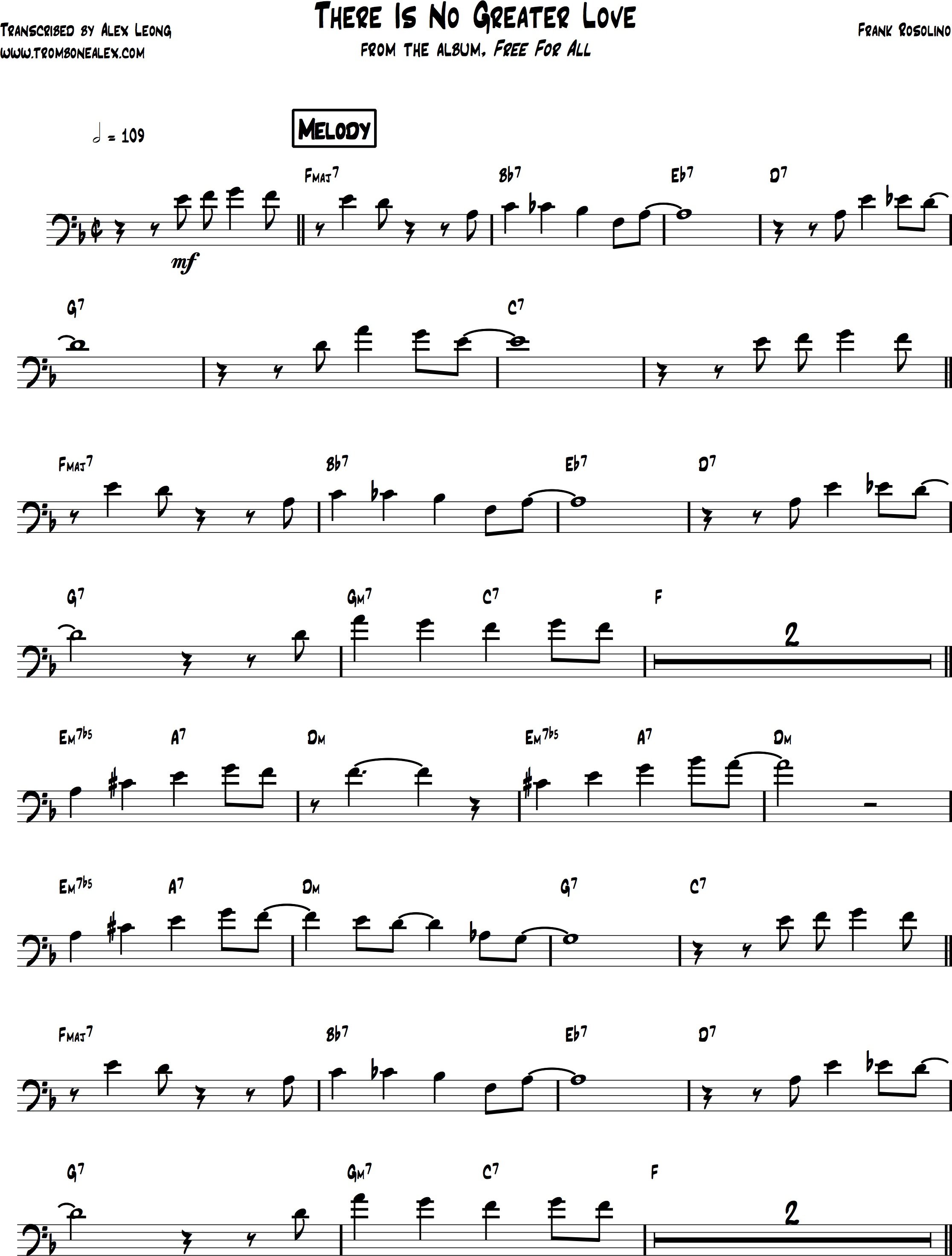“Sneakyoso” captures the complexities of bebop as developed by Coltrane and Monk in the late-1950s, such as the use of whole-tone melodies, altered chords, tritone substitutions, minor-third relations, and parallel harmonic motion as an evolution of the blues.
Read MoreHis early hit songs, such as “It Had to Be You” and “You’re in the Army Now,” established Isham Jones as one of the most popular bandleaders prior to his 1936 composition of “There Is No Greater Love,” a tune that shares similarities with traditional New Orleans and Chicago-style jazz.
Read MoreUnlike the musicians who fought for Civil Rights and pursued the musical liberation of bebop, Rosolino’s endeavors took him westward toward the showbiz lights of Las Vegas and Hollywood where his virtuosity, comedic timing, and mischievous charisma provided him the opportunity to entertain audiences around the world on the stage and screen.
Read MoreWhile The Great Migration of American workers toward northern industrial cities may have spread the popularity of jazz music throughout the States, it was through the efforts of pianist and lawyer Hoagy Carmichael, along with the music publishing family of Irving Mills, that transformed an original Black artform into a household commodity.
Read MoreDrummer Stan Levey was immersed in the New York City bebop scene throughout the 1940s and became an integral part of its westward expansion toward the Lighthouse Cafe in Southern California. Along with the blustering rhythms of the east coast, he brought with him the harmonic depth that elevated the blues as an intellectual art form.
Read MoreHenry Nemo was no nobody - quite the contrary. An aspiring entertainer and trendsetter, Nemo found himself among the bustling jazz scene of New York City during the late-1930s, socializing and collaborating with some of jazz’s greats, where he was loosely associated with the development of jive talk and the hipster traits celebrated by the Beat Generation. Henry Nemo was the embodiment of a living history.
Read MoreIn addition to performing, percussionist & pianist Victor Feldman composed tunes including “Twilight” and the Miles Davis standard “Seven Steps To Heaven,” as well as music for film and television.
Read MoreRosolino’s version of “Love For Sale” was ahead of the West Coast trend. By utilizing global dance rhythms in jazz, Rosolino’s charismatic brand of hard bop provided the Hollywood lot with some much-needed depth and perspective.
Read More






